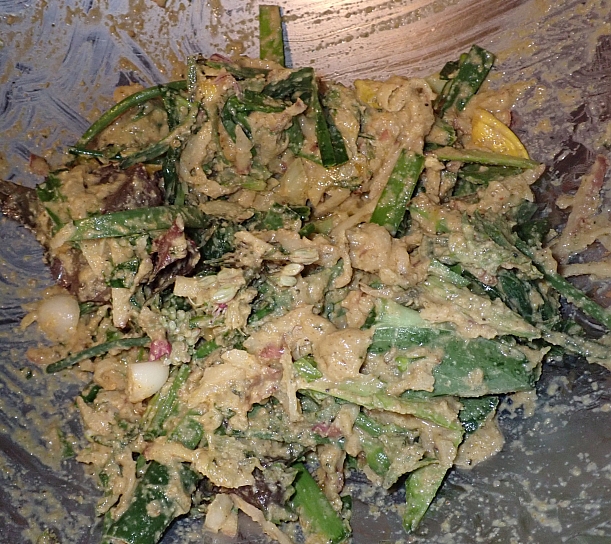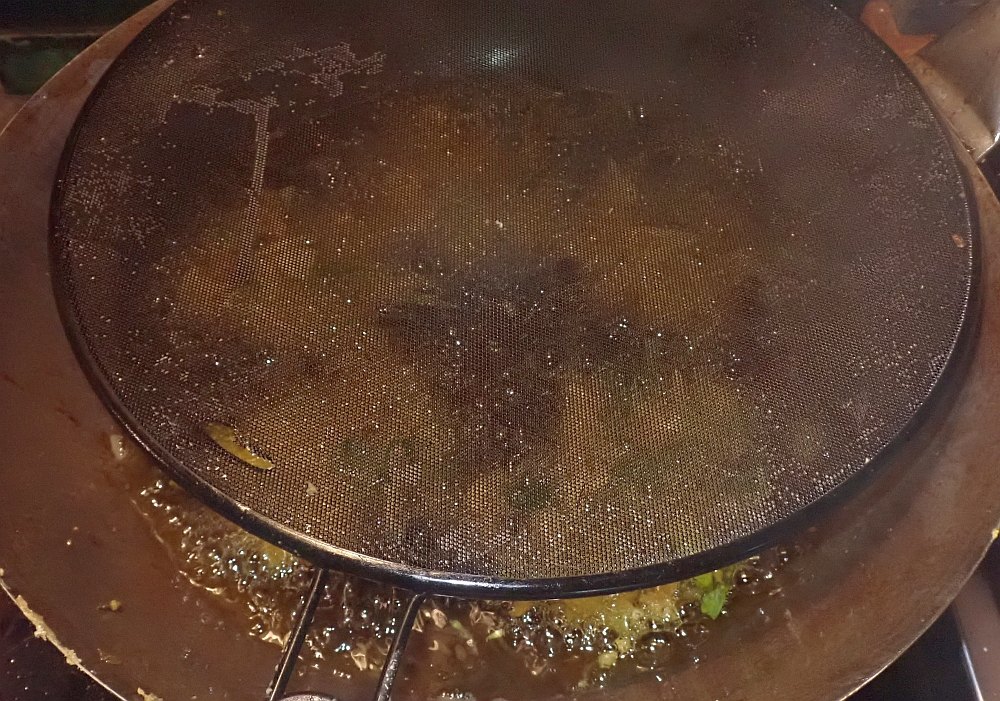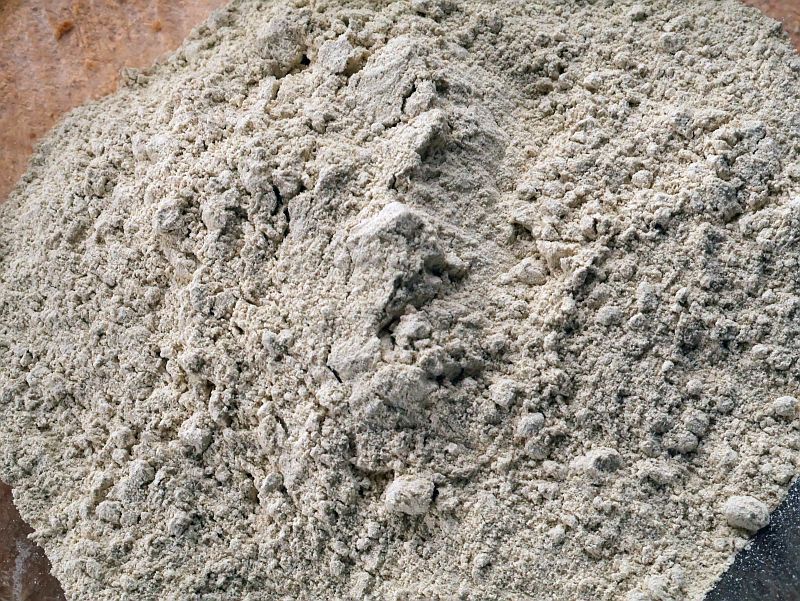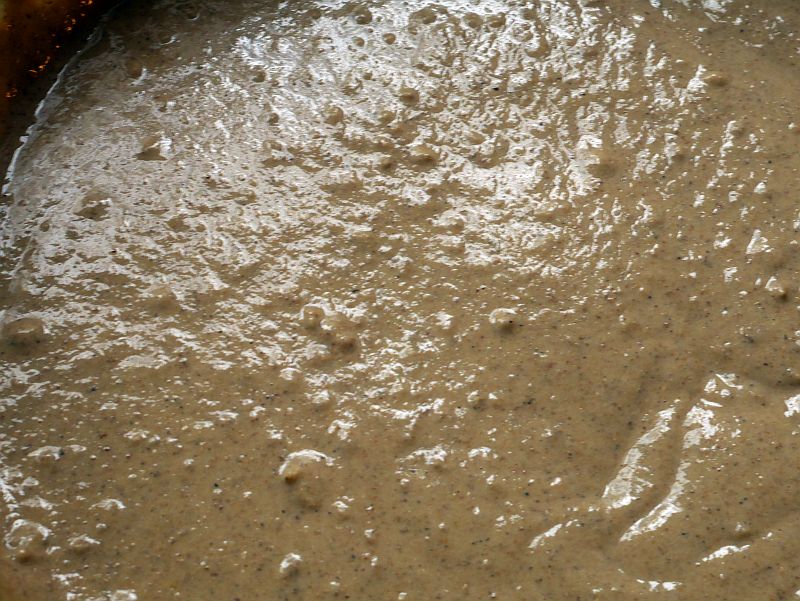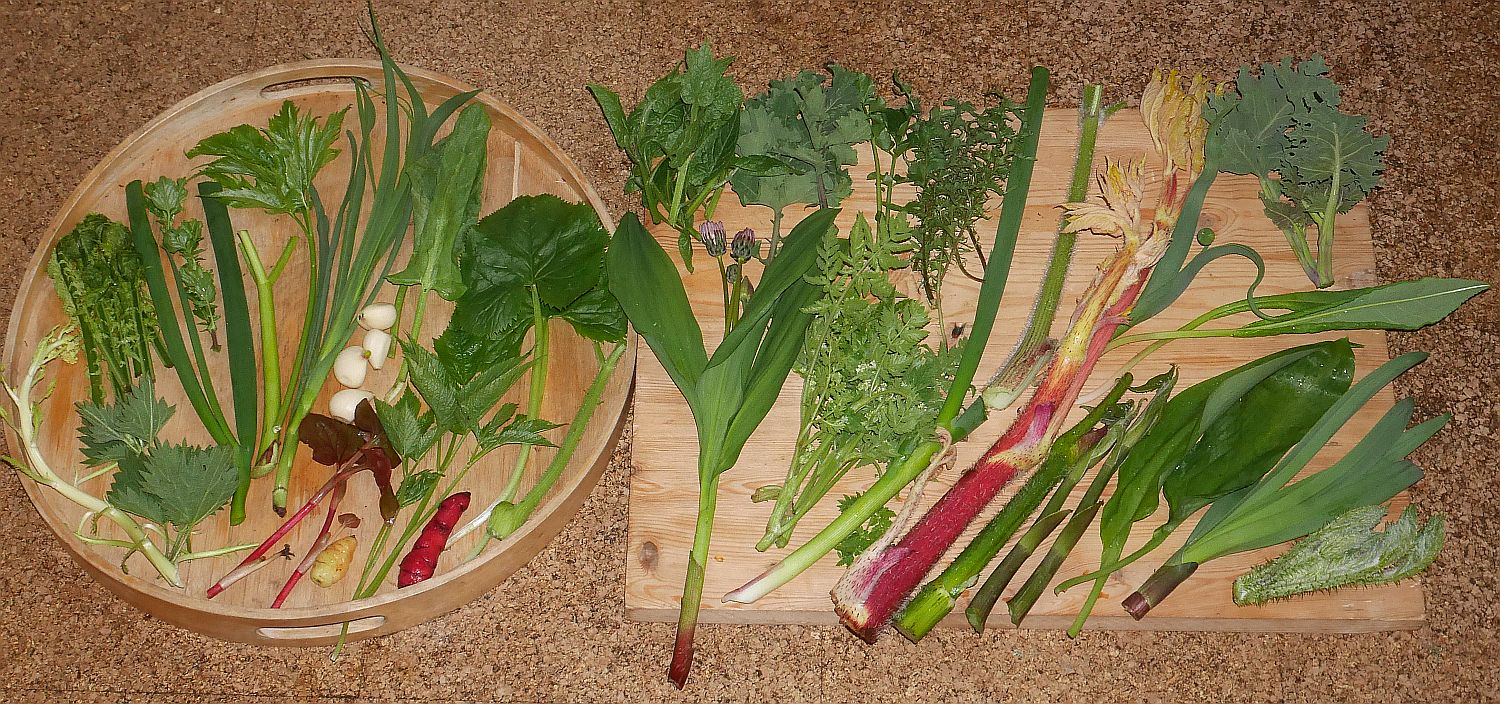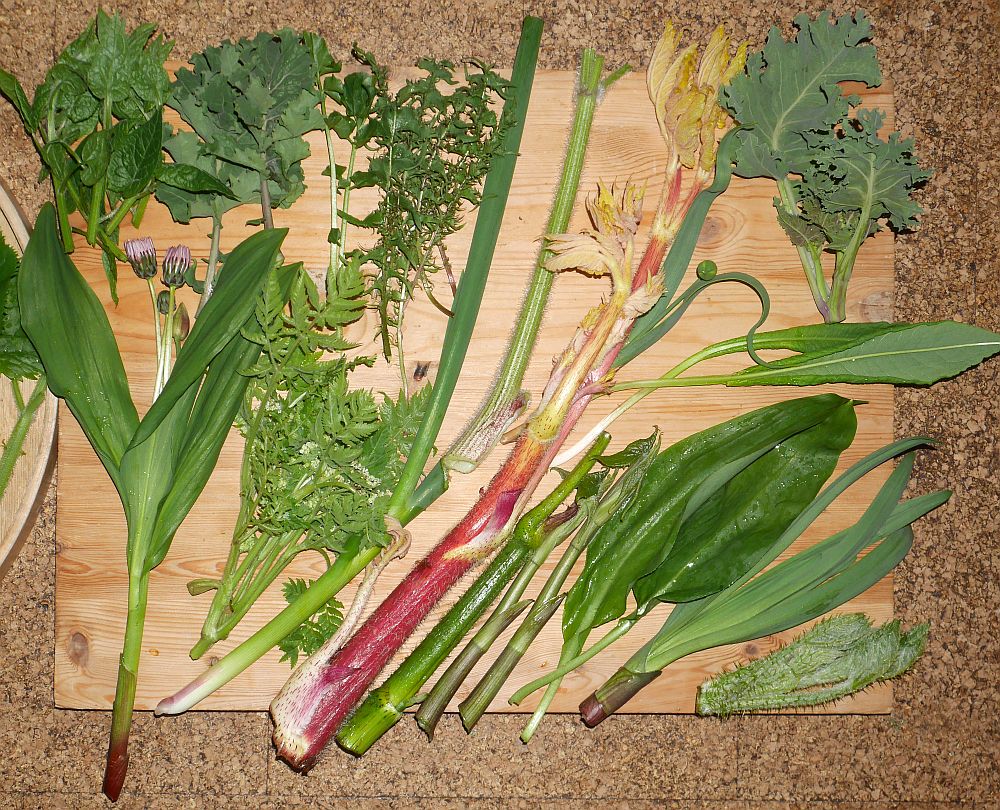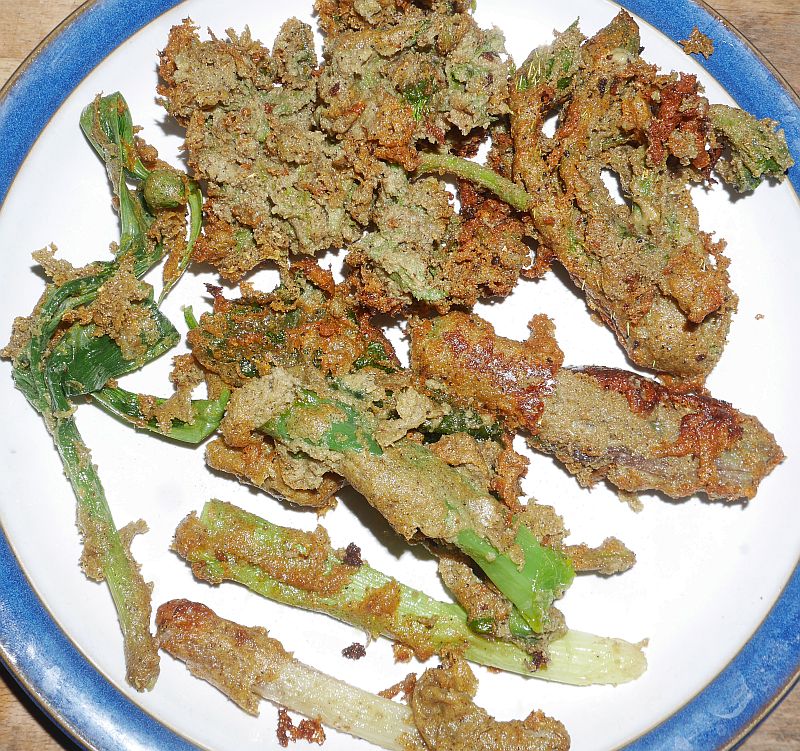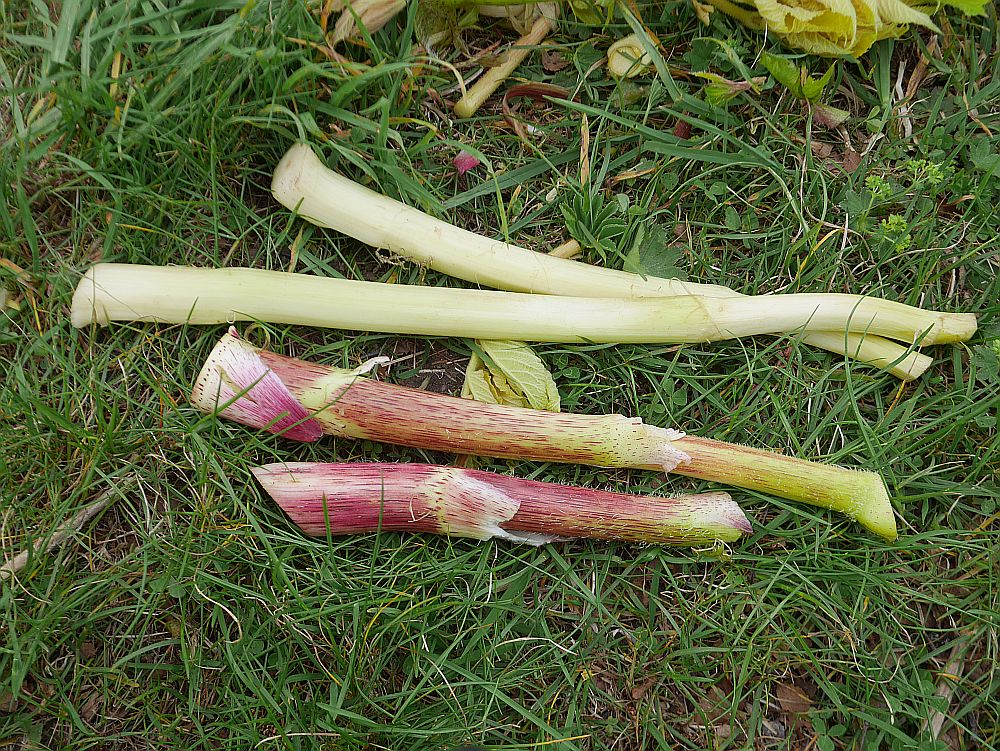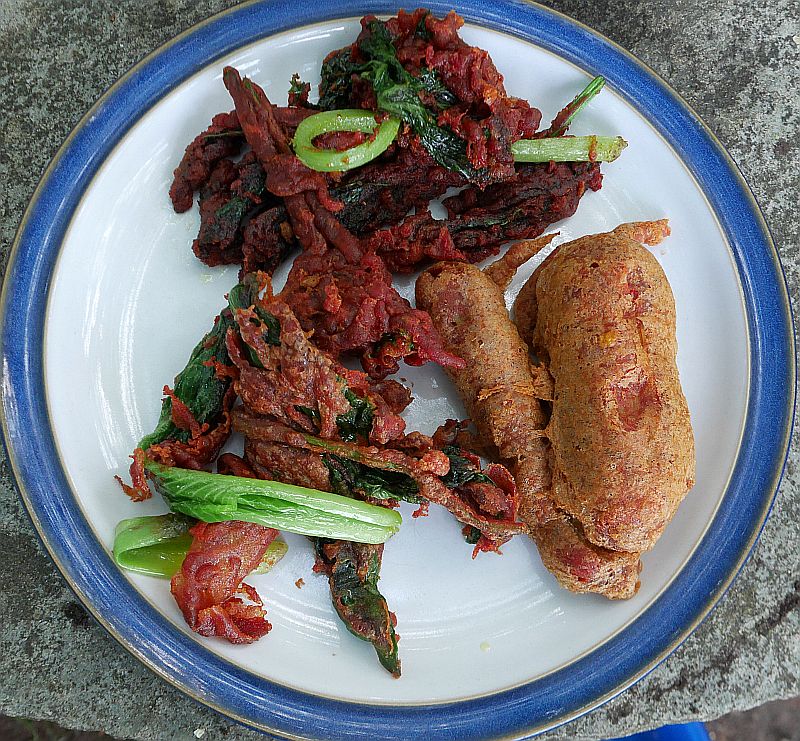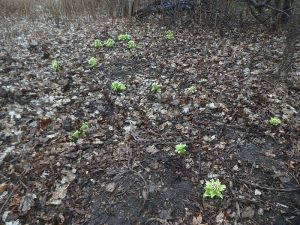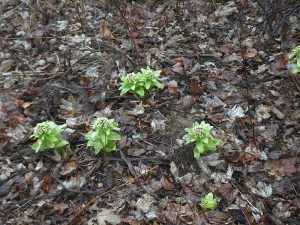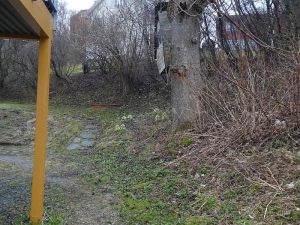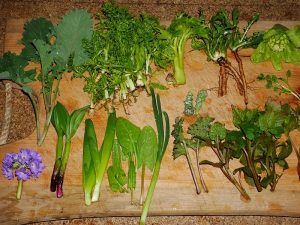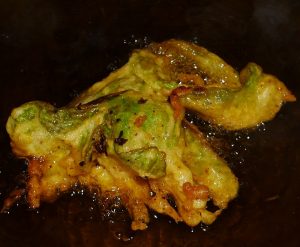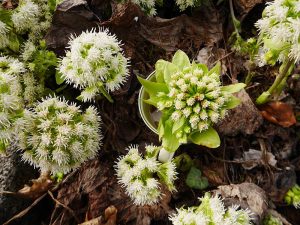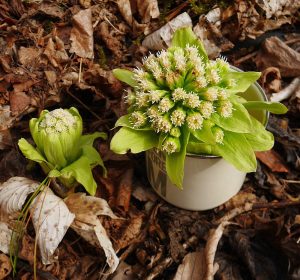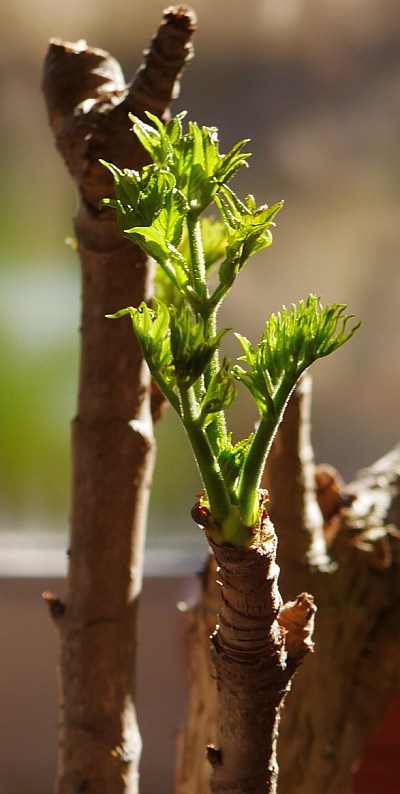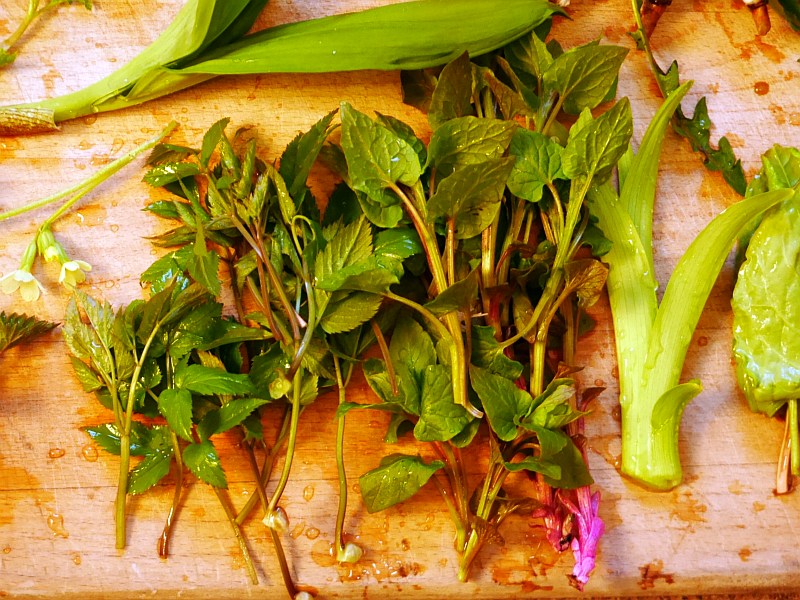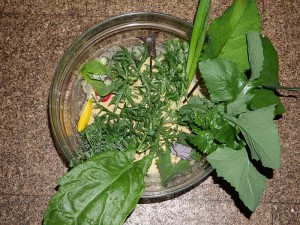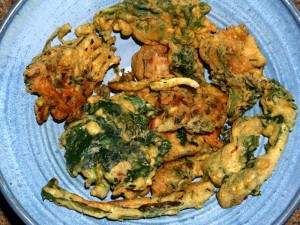On Wednesday (12th June 2024) we made indian pakora with a diversity of perennial veg straight from the garden, served with home grown cilantro raita (yogurt). I usually fry the individual greens independently, this time they were mixed! Delicious!
Tag Archives: pakora
42 Pakora veggies
Here are this week’s largely perennial veggies made into a delicious and varied 42 variety pakora!
Picture 1 below (Roughly from left to right): Saxifraga pensylvanica (swamp saxifrage); Malva alcea (hollyhock mallow / rosekattost); Tragopogon pratensis (goatsbeard / geitskjegg); Campanula rapunculoides tops (creeping bellflower / ugrassklokke); Scorzonera hispanica ( scorzonera / scorsonerrot, svartrot); Houttuynia cordata “Chameleon” (kameleonplante); Fallopia japonica “Compactum Roseum” (Japanese knotweed / parkslirekne); Hosta spp.; Houttuynia cordata; Doellingeria scabra / Aster scaber (Korean Aster; Koreasters); Carum carvi flowering tops (caraway / karve); Allium fistulosum (Welsh onion / pipeløk); Allium victorialis (victory onion / seiersløk); Crambe maritima “Lily White” flowering tops (sea kale / strandkål); Hablitzia tamnoides tops (Caucasian spinach / stjernemelde); Smilax lasioneura shoot (Blue Ridge carrionflower):
Picture 2 below (Roughly from left to right): Urtica cannabina; Rumex patientia flower shoot (patience dock / hagesyre); Asparagus officinalis (asparagus / asparges); Cardamine raphanifolia flowering tops; Myrrhis odorata (sweet cicely / Spansk kjørvel) flowering tops; Aegopodium podograria (ground elder / skvallerkål); Allium ursinum (ramsons / ramsløk); Leucanthemum vulgare (ox-eye daisy / prestekrage); Parasenecio hastatus top; Brassica juncea (two cultivars) (mustard greens / sennepsalat); Urtica dioica ( stinging nettle / brennesle); Cryptotaenia japonica “Atropurpurea” (mitsuba); Allium scorodoprasum (sand leek / bendelløk); Campanula latifolia (giant bellflower / storklokke); Allium pskemense x fistulosum (Wietse’s onion / Wietsesløk); Lepidium latifolium flower shoots (dittander / strandkarse); Silene vulgaris shoots (bladder campion / engsmelle); Cichorium intybus (chicory / sikkori); Bunias orientalis flowering tops (Turkish rocket / russekål); Mentha (two cultivars)
(mint / mynte); Taraxacum sublaciniosum “Delikatess” (moss-leaved dandelion; mosebladet løvetann); Ligularia fischeri (Fischer’s Ligularia; Koreanøkketunge):
Picture 3 below Hosta “Big Daddy” blanched shoots and Allium sativum (garlic / hvitløk)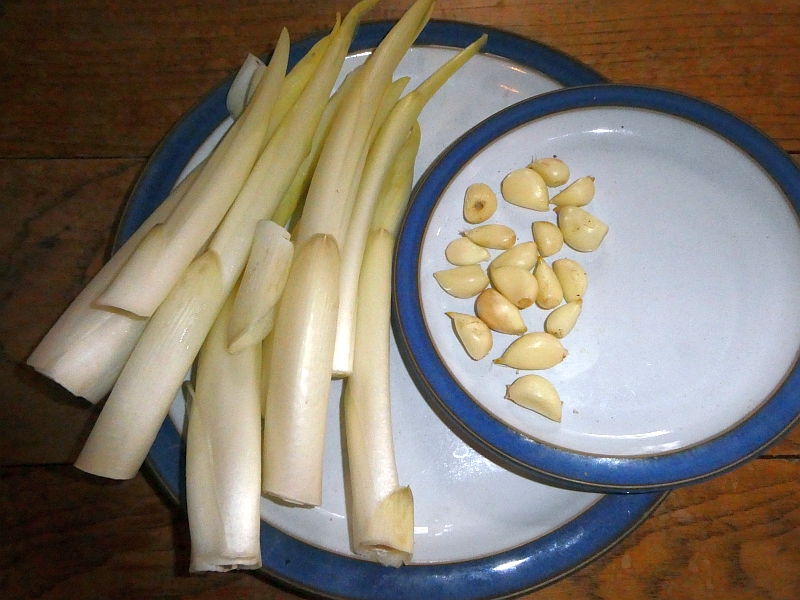
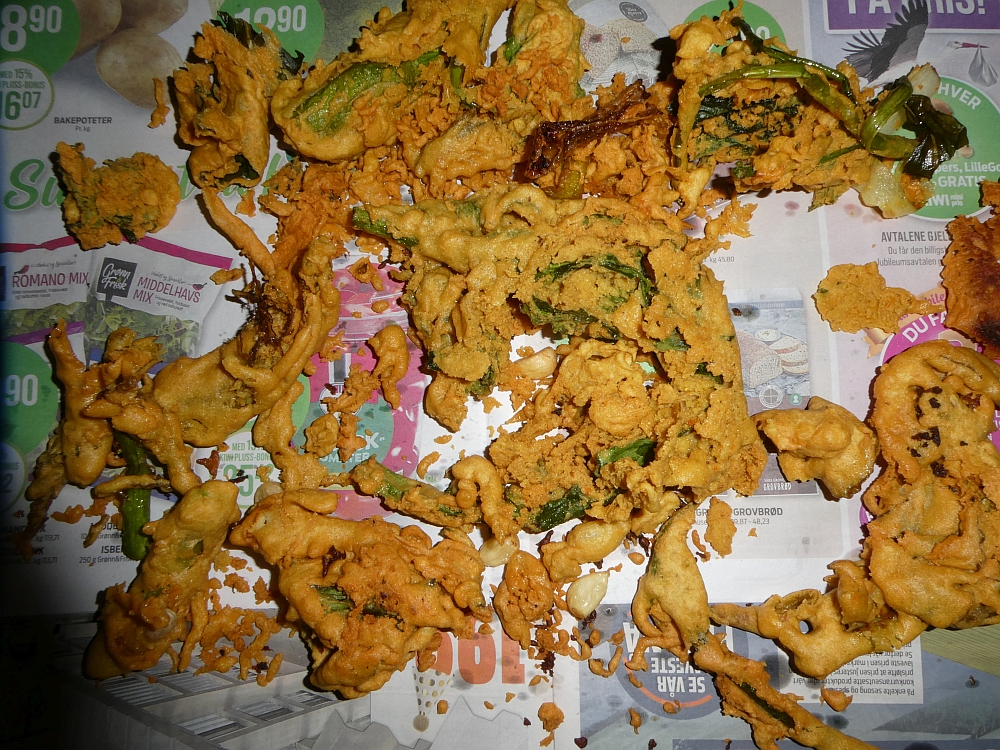
Broad bean (fava) pakora
A little over a year ago we made pakora (Indian fried vegetables) with 65 perennial vegetables to celebrate my 65th birthday (see https://www.edimentals.com/blog/?p=25405)
I made the following comment: “Just wish I’d had broad / fava bean (bondebønne) flour available for the pakoras rather than gram flour (chick peas)…next time I hope :)”
Well, my wish came true and a Swedish guy kindly sent me a packet (sorry, I forget your name, but I think he produces this great slow food product; see http://svensk-fava.se).
(I don’t have the equipment to grind my own broad beans). So here you are. The album below shows the flour, the pakora mixture, the 30 veggies used (list at the bottom) and the final delicious product, a dream come true, something I’ve wanted to make and talked about for years!!
The veggies:
Ostrich fern / strutseving (Matteuccia struthiopteris)
Horseradish / pepperrot (Armoracia rusticana) – blanched
Stinging nettle / brennesle (Urtica dioica)
Topset onion / luftløk (Allium x proliferum)
Common wintercress / vinterkarse (Barbarea vulgaris)
Giant ulleung celery / kjempe ulleung selleri (Dystaenia takesimana)
Allium hymennorhizum
Garlic / hvitløk (Allium sativum)
Himalayan water creeper (Houttuynia cordata)
Oca (Oxalis tuberosa) yellow and red varieties
Ground elder / skvallerkål (Aegopodium podograria)
Patience dock / hagesyre (Rumex patientia)
Gomchwi (Ligularia fischeri)
Common sorrel / engsyre (Rumex acetosa)
Pink-flowered dandelion / roseløvetann (Taraxacum pseudoroseum)
Victory onion / seiersløk (Allium victorialis)
Sweet cicely / spansk kjørvel (Myrrhis odorata)
Welsh onion / pipeløk (Allium fistulosum)
Hogweed / bjørnekjeks (Heracleum spp.)
Parasenecio hastatus
Udo (Aralia cordata) – blanched
Douglas’ onion / Douglas-løk (Allium douglasii)
Bistort / ormerot (Polygonum bistorta)
Ramsons / ramsløk (Allium ursinum)
Pacific onion / Stillehavsløk (Allium validum)
Devil’s club (Oplopanax horridus)
Sea kale / strandkål
Caucasian spinach / stjernemelde (Hablitzia tamnoides)
Great waterleaf (Hydrophyllum appendiculatum)
Moss-leaved dandelion / mosebladet løvetann (Taraxacum sublaciniosum “Delikatess”)
Perennial pakoras
Around the World with Fuki
At the end of February I gave a talk about my trip to Japan for the first time and showed this slide of supermarket leaf petioles, flower buds and fuki tempura which I was served!
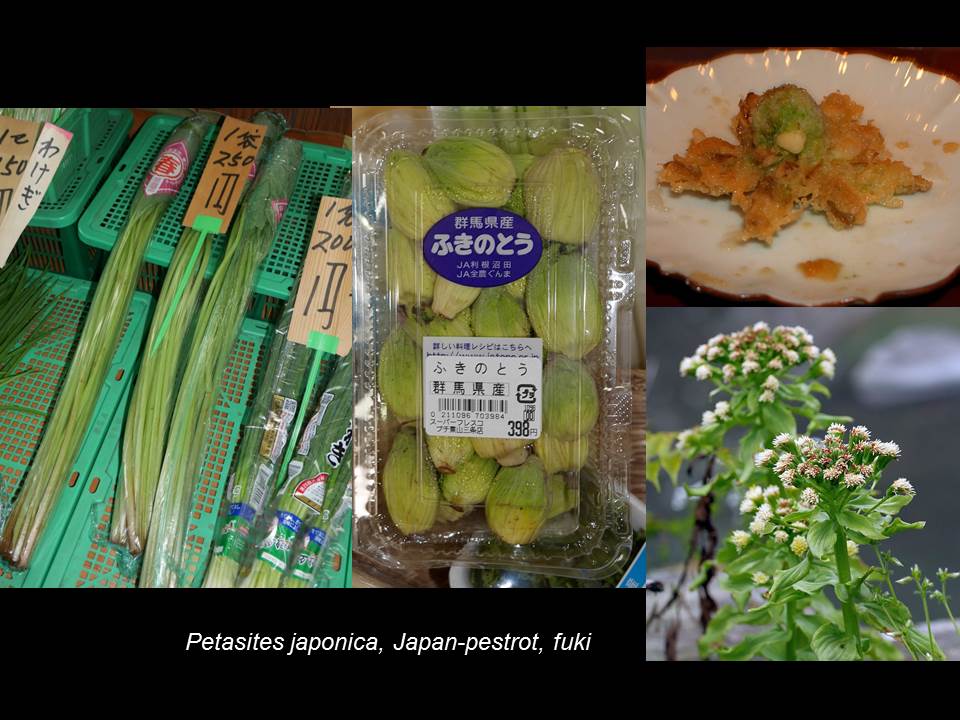
At the talk, one of the audience was Ingunn Moslet. She contacted me afterwards as she was sure that she had seen this plant growing in the centre of Trondheim. We therefore agreed that we would meet in the spring to check it out. Yesterday, 3rd May 2018, I met Ingunn in Bakklandet and she took me to the site which seemed to be an old overgrown garden (there were old redcurrant bushes on the edge of the site). Upon seeing the flowering shoots I wasn’t in doubt that this was fuki and not similarly white flowered Petasites albus from the alps which probably has higher levels of bitter alkaloids. We counted 38 flowering heads and 10 more in another location in a nearby garden. As it was at perfect stage to eat, I took one shoot with me to try that evening and a second more developed flower to compare with Petasites albus (grown contained in a pot in my garden for the bees for many years) and my own fuki (from a wild stand in Rogaland). Below is an album of pictures from our visit to the site, the fuki pakora I made last night and comparisons of the flower heads of P. japonicus and P. albus!
Although often treated as an invasive and noxious weed, I would argue it is also a valuable addition to our flora as it flowers early and therefore is a valuable source of nectar for butterflies and bees, as well as being a great perennial vegetable, so instead of spraying it with toxic chemicals like Roundup let’s love it instead and limit it by harvesting it!
See the film below which I took in the Toronto botanical garden in April 2017!
Discovering the fuki patch in Trondheim:
Perennial veg pakora
Pakora hasn’t met this selection of veggies before!
I used: Day lily buds (Hemerocallis), common sow thistle (Sonchus oleraceus), radish, red mitsuba (Cryptotaenia japonica atropurpurea), musk mallow (Malva moschata), Korean aster (Aster scaber), sorrel (Rumex acetosa), garden orach (Atriplex hortensis), Parsley pea (tops), Allium nutans x senescens (leaves and flower stems/buds) and Hablitzia tamnoides (tops)…..
DELICIOUS!!




